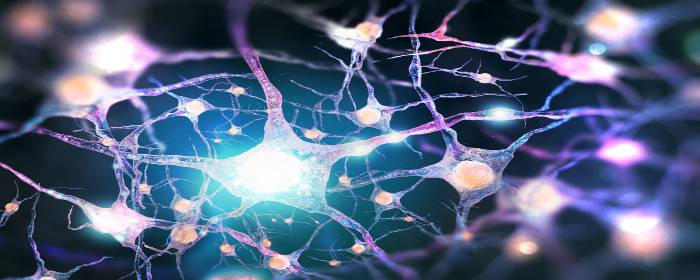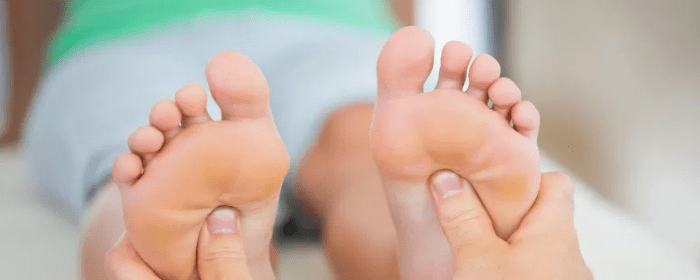
by admin | Nov 30, 2018 | Health Awareness
Regenerative medicine seeks to restore the functionality of cells, tissues, organs, or genes. In particular, stem cell therapy is among the most promising forms of regenerative medicine. This is due to the fact that stem cells are not specialized cells and can, therefore, transform into any cell or tissue with which they come into contact, including that of muscle, tendon, bone, and ligament. From supporting regrowth of meniscal cartilage in the knee to the self-renewal of central nervous system (CNS) tissue, stem cell therapy has shown a potential option of treatment for a broad range of conditions and injuries.
Stem cell therapy is an emerging regenerative medicine option for those who have sustained the central nervous system (CNS) damage including traumatic brain injury, stroke, and neurodegenerative disorders such as multiple sclerosis. CNS injury is characterized by an inflammatory response, molecular imbalance, cell death, and cyst and scar formation. Researchers suggest that co-therapies, such as physical rehabilitation, could help be a potential booster for their stem cell therapy treatment outcome.
Studies have shown stem cells’ ability to aid in CNS recovery but may also suggest that while significant improvement is made, the treatment is often not enough to completely recover CNS functionality without further intervention. In conjunction with physical therapy, stem cell therapy could produce stronger results. Targeted exercises can produce beneficial effects at the anatomical and physiological levels, thereby positively influencing neural stem cell pools and improving stem cell therapy outcomes. Exercise has been shown to augment stem cell transplantation following muscular injuries in certain studies, but further research is needed to determine exactly how physical therapy and stem cell treatments can be used to support optimized recovery on a case-by-case basis.
Moving forward, it is suggested that physical therapy could help as a supplement to stem cell therapy. By partnering these two therapeutic approaches, patients may be able to potentially improve their treatment outcomes as well as enhancing functionality and quality of life.

by admin | Nov 21, 2018 | Stem Cell Therapy
Multiple sclerosis (MS) has widespread effects on the body. The disease is characterized by a breakdown of the protective cover surrounding the nerves, called the myelin sheath. When the myelin sheath is compromised, it makes it more difficult for the brain to communicate critical messages to the rest of the body. Unfortunately, the ways in which MS affects the body are rarely isolated: when nerve cells are damaged as a result of myelin sheath damage, it leads to a disconnection between the brain and the organs, muscles, and tissues.
Muscle Weakness & Pain
Muscle weakness can impede daily life, and for some, it turns even basic tasks into obstacles. Weakness is often reported by MS patients in the limbs, which can make it difficult to walk, shower, and get dressed. It’s also the culprit behind foot drop, in which the front part of the foot cannot be lifted. This causes individuals to adjust their gait, such as swing their leg outward.
Beyond weakness, MS also often produces muscular pain. Many people with MS experience a sensation of “pins and needles,” sharp pain, tingling, or aches. Involuntary muscle spasms are also common and are experienced primarily in the legs.
Treatment Options
While options such as nerve-blocking agents, muscle relaxants, and pain relievers may be prescribed to treat severe muscle spasms or pain, many patients choose to explore non-drug alternatives first. Working with an occupational therapist, for example, can aid people with muscle pain or weakness in developing different approaches for completing daily tasks and conserving energy. Physical therapists, too, can provide targeted exercises to strengthen key muscle groups, which could help to combat muscle weakness or pain. Lastly, lifestyle adjustments such as improved sleep habits, rest breaks, and assistive devices could help you navigate the muscular challenges presented by MS. Stem cell therapy may also be an alternative option those with MS may consider to potentially help in managing some of the symptoms associated with MS.

by admin | Oct 24, 2018 | Health Awareness, ALS, Multiple Sclerosis
Amyotrophic lateral sclerosis (ALS, also known as Lou Gehrig’s disease) and multiple sclerosis (MS) are similar in that they are both neurodegenerative disorders which impact the brain and central nervous system. Neither condition has a known cure, and both affect the muscles and nerves. Yet, the conditions have distinct difference between MS and ALS, particularly in terms of their symptoms. Here, we explore the ways in which these conditions are similar and then examine their distinctive qualities.
Similarities
Muscle Weakness: Weakness in the muscles of the arms and legs are common in both ALS and MS, as are difficulty walking and involuntary muscle spasms.
Speech Challenges: Slurred speech, while less common in MS, can be experienced by patients with both conditions. In ALS, this symptom worsens progressively, but it can be intermittent in people with MS.
Swallowing Problems: Dysphagia, or difficulty swallowing, is a symptom shared by both conditions. However, while it becomes progressively worse in patients with ALS, individuals with MS experience it to a lesser degree and intermittently.
Breathing Issues: ALS is characterized by the breaking down of the nerve cells in the brain and spinal cord, which control the muscles in your body. Thus, as muscles begin to atrophy, breathing complications become more pronounced. In people with MS, lung function is lower than normal, but shortness of breath is typically only noticed upon exertion, if at all.
Differences
Both ALS and MS scar the covering of the nerve fibers, but this happens differently in each condition. In MS, the myelin sheaths, coverings which protect the body’s nerve cells, are compromised. This impedes the brain’s ability to send signals to other parts of the body, which affects both voluntary and involuntary muscle movement. The symptoms of ALS, on the other hand, all involve nerves that control voluntary muscle movement.
The early stages of ALS vs MS Symptoms bear similarities to one another, like fatigue, trouble walking, muscle stiffness, and twitching are common in both. Yet, physicians are able to distinguish among the two fairly quickly, due to the following distinct symptoms.
Vision Impairment: While ALS sufferers may notice challenges with voluntary muscle movement, they often do not lose the ability to see. For MS patients, however, the optic nerve can become swollen, resulting in vision problems. In fact, up to 80% of all MS patients experience vision-related symptoms.
Bladder/Bowel Issues: Issues with involuntary muscles can present bladder challenges, including incontinence, in at least 80% of people with MS. Diarrhea is also common for MS sufferers. People with ALS may not experience either condition, but constipation is common in both illnesses.
Tingling/Pain: A select population of ALS patients experience tingling, but it is often temporary. For people with MS, however, sensory symptoms are common and pronounced. Numbness, tingling, and pain are reported by MS patients.
While the symptoms described above are commonly associated with ALS, MS, or both, having one or more of these symptoms does not mean a patient is afflicted with either condition. With that being said, it is always a good idea to have a physician weigh in on any new or unfamiliar symptoms to receive an accurate diagnosis and treatment plan.

by admin | Sep 3, 2018 | Multiple Sclerosis
Foot drop, also commonly referred to as drop foot, is a condition in which the muscles that lift the foot become weak or paralyzed. As a result, the foot may drag while walking. Foot drop isn’t a disease in itself; instead, it can develop as a result of preexisting medical conditions. Learn more about what causes the symptom and how it can be treated below.
What Are the Characteristics of Foot Drop?
Because foot drop causes the front toes to drag, it often leads individuals with the condition to overcorrect their gait to avoid tripping or discomfort. They may either swing the leg outward in an arc or lift the knee higher. This coping mechanism is what’s known as “steppage gait.”
Who Might Be Affected by Foot Drop?
Foot drop can be caused by certain neurological disorders, including amyotrophic lateral sclerosis (ALS, or Lou Gehrig’s disease), Multiple Sclerosis (MS), and muscular dystrophy. These and other neurological conditions lead to weakening and deterioration of the muscles, which can cause foot drop. Cerebral palsy and stroke may also bring on foot drop.
In addition to individuals with neurological conditions, foot drop can also occur in people who have sustained nerve damage, or neuropathy. Specifically, the peroneal nerve, which extends from the sciatic nerve and wraps from behind the knee to the shin, is compromised in drop foot. There are a number of possible causes of this form of nerve damage, including diabetes, sports injuries, hip or knee replacements or time spent in a cast, long durations spent cross-legged or squatting, and childbirth.
How is it Treated?
Physicians make treatment recommendations based on the severity of the condition, as well as its root cause. While it is not always fully curable, some treatments can make noticeable improvements in gait. Leg braces may be worn to provide ample support. Patients may also benefit from attending physical therapy to perform leg and foot strengthening exercises. Certain movements can also be completed at home, including gentle stretches and chair exercises.
Sometimes, functional electrical stimulation is also used to enhance nerve functionality, which can spur muscle contraction to lift the foot. Doctors may also recommend nerve surgery if it is deemed to be a feasible solution. For individuals who would not benefit from surgery, implementing lifestyle changes such as eliminating floor clutter and ensuring homes are well-lit may be helpful.

by admin | Jul 31, 2018 | Health Awareness
A healthy diet is important for feeling your best, but for individuals with an autoimmune disorder such as multiple sclerosis (MS), healthy eating plans become even more critical. This is the belief on which the Wahls diet was founded. Developed by Dr. Terry Wahls, the diet implements paleo-style eating to aid in symptom management. Here, we learn more about the eating plan that has helped MS patients and sufferers of other autoimmune disorders manage their conditions more effectively.
How is Diet Linked to Autoimmune Diseases?
Autoimmune disorders are suspected to be caused by low-grade inflammation, or the inflammation that takes place in our cells. Research suggests that a microbial imbalance of gut flora could also contribute to autoimmunity. Eating plans such as the Wahls protocol diet aim to reduce inflammation by eliminating certain food chemicals which could contribute to gut dysbiosis and inflammation in sensitive individuals.
What Does the Wahls Diet Entail?
Like the Paleolithic (Paleo) diet, the Wahls protocol emphasizes the consumption of meat and fish and vegetables. It also encourages fat intake from both animal and plant sources and allows for brightly-colored fruits, such as berries, to be enjoyed regularly.
In order to minimize potential inflammatory agents found in common food sources, the diet is fairly restrictive. For instance, dairy products and eggs are prohibited, along with nightshade vegetables such as eggplant, tomatoes, potatoes, and peppers. Legumes, all grains, and sugars (except for those occurring naturally in fruits) are also restricted.
In recognition of the varying degree of severity in autoimmune disorders, as well as patients’ diverse food preferences and needs, Dr. Wahls has established three tiers of the diet. For instance, Level 3 calls for the elimination of all white-fleshed fruits, while Level 1 requires only the avoidance of all foods containing gluten and dairy.
Does the Diet Really Work?
In patients with MS, following a paleo-style diet has been shown to improve fatigue. Yet, because subjects involved in clinical studies are also typically receiving additional forms of therapy, it is difficult to isolate dietary tactics alone as the primary agent for achieving results. Nonetheless, Dr. Wahls attributes the diet to her own reversal of symptoms. Before she embarked on a healthier eating plan, Dr. Wahls’ muscles had weakened to the point at which she needed a tilt-recline wheelchair. After transforming her diet, she was able to bike nearly 20 miles a day.
While research on the complex ways in which dietary choices impact immune functionality is still ongoing. For patients with autoimmune disorders like MS, talking to doctors about anti-inflammatory eating plans is certainly not a bad idea. Beyond aiding with symptom management, a healthier eating plan could support better wellness outcomes and reduce risks for other serious conditions, such as cardiovascular disease and type 2 diabetes.






 St. Petersburg, Florida
St. Petersburg, Florida
